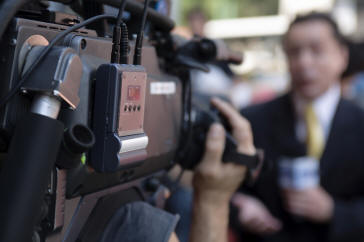Allandale25
Senior Member

Virtual drop in coming up.

No. It's not even a Phase 3, in that there's no alignment chosen etc. It's aspirational, and the former GTAA CEO was the one really pushing for it; not sure if the current one sees it as a priority.Is there enough funding to continue the line to Pearson, or is that a phase 3?
Why not extend the line directly to Terminals 1 and 3 instead? The stations do not have to be too massive. plus you have direct access to both terminals, unlike the previous Union Station West concept.I believe that the hope was that the GTAA would be contributing funding to complete the connection between the LRT and Pearson (along with their whole 'Union West' transit hub concept), but COVID has really destroyed their financial situation and I don't see it happening any time soon now.
COVID-19 is only a short-term bump. The Pearson Hub will be needed years AFTER COVID-19, not today.I believe that the hope was that the GTAA would be contributing funding to complete the connection between the LRT and Pearson (along with their whole 'Union West' transit hub concept), but COVID has really destroyed their financial situation and I don't see it happening any time soon now.
The Greater Toronto Area (GTA) is projected to be the fastest growing region of the province, with its population increasing by 2.6 million, or 36.7 per cent, from 7.0 million in 2019 to over 9.5 million by 2046. The GTA’s share of provincial population is projected to rise from 47.9 per cent in 2019 to 49.8 per cent in 2046.
They wanted to expand the terminal to have planes board at both sides and move the check-in east of Airport Rd on the Union Station West side. This would mean they would demolish all that network of roads and parking garages and move to closer to Viscount Station. All of this would a huge undertaking before they can finalize on anything. So there won't be an extension to the airport for years to come.Why not extend the line directly to Terminals 1 and 3 instead? The stations do not have to be too massive. plus you have direct access to both terminals, unlike the previous Union Station West concept.
True, and while provinces and countries can work on those type of timeframes, corporations that are expected to break even (even those owned by the crown) have to pay attention to cashflow.COVID-19 is only a short-term bump. The Pearson Hub will be needed years AFTER COVID-19, not today.
Why not extend the line directly to Terminals 1 and 3 instead? The stations do not have to be too massive. plus you have direct access to both terminals, unlike the previous Union Station West concept.
By comparison, coronavirus notwithstanding, 2020 is more settled and calmer despite the huge disruptions and uncertainties caused by the pandemic. The Spanish flu did run its course by 1920 without vaccines or treatment and fortunately did not recur. Yet by 1923, the United States began an unprecedented economic boom that produced the Roaring Twenties and lasted for six years until the 1929 stock market crash. How did this turnaround happen given these earlier crises and setbacks? And are any of these factors applicable to today or a post-coronavirus world?
Likewise, after the Black Death, the Renaissance occurred. The Black Death allowed peasants to have social mobility.The Spanish Flu (1918-1920) caused a recession after the Great War (aka World War I). However, the middle of the 1920's there was an economic boom, that only ended with the Great Depression (that's another story).
From link.
With the creating of central banks, and the large funding of infrastructure projects, it shouldn't take 3 years this time to kickstart the economy.The Spanish Flu (1918-1920) caused a recession after the Great War (aka World War I). However, the middle of the 1920's there was an economic boom, that only ended with the Great Depression (that's another story).
However, the middle of the 1920's there was an economic boom, that only ended with the Great Depression
WW2 was a BIG government employment and economic influence for most countries. Transit projects are not as big, of course.Which in turn was remedied by WW2.
Hmm, I question the desirability of this location, even with transit. Would offices want to be located to close to a noisy airport?That somewhat defeats the primary purpose of Union West, which is not really bringing passengers to the airport. Pearson wants to build several million sqft of office space on land they own and collect revenue through it in an effort to reduce airport fees. Transit is primarily to ensure this office space is attractive; Harbour East is a competitor to the Union West concept.
Having strong transit connectivity at the airport is a nice side-effect but not something they'll volunteer to fund without strong office demand.